1.4.3 boolean algebra
1/24
There's no tags or description
Looks like no tags are added yet.
Name | Mastery | Learn | Test | Matching | Spaced |
|---|
No study sessions yet.
25 Terms
AND
/\
0 0 = 0
0 1 = 0
1 1 = 1

OR
V
0 0 = 0
0 1 = 1
1 1 = 1

NOT
0 = 1
1 = 0
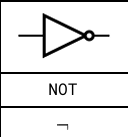
XOR
V
1 0 = 1
0 0 = 0
1 1 = 0

truth table
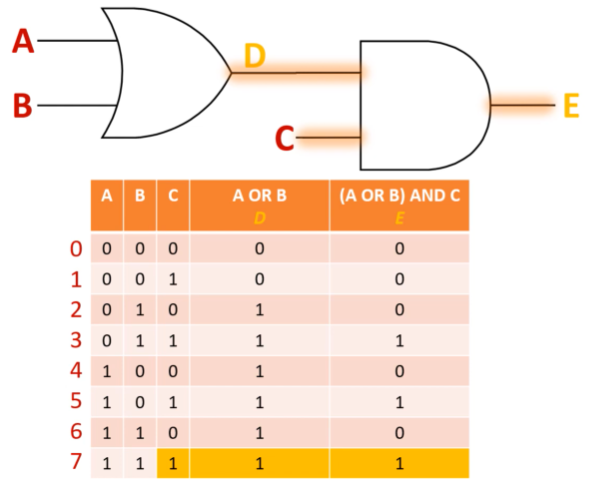
boolean expression
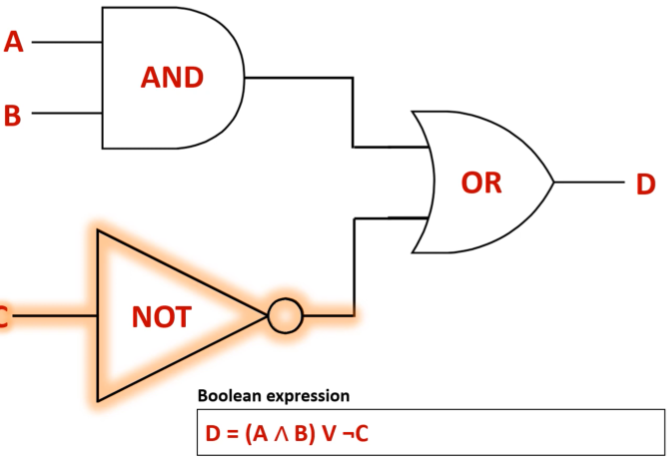
karnaugh maps
method used to simplify Boolean expressions
A OR B shown in image
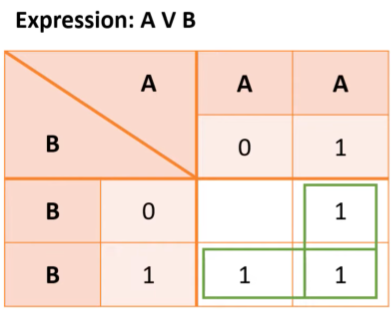
A /\ N V A /\ NOT B
can be simplified down to just A
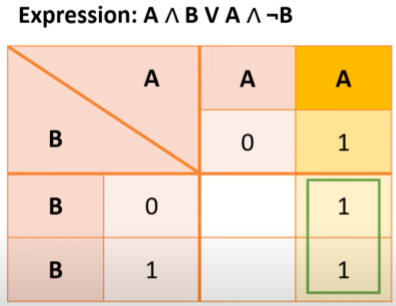
karnaugh map example
AB - only one digit can be changes at a time so the order is 00, 01, 11, 10
expression can be simplifies to B V C
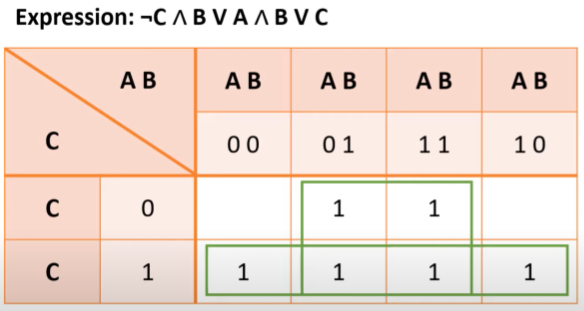
karnaugh map simplification rules
boxes must be rectangles or squares, no diagonal boxes
boxes can only contain 1s
boxes must be as large as possible
boxes of 2n 1s: 1, 2 ,4 ,8 ,16
boxes can overlap
aim for smallest number of overall boxes
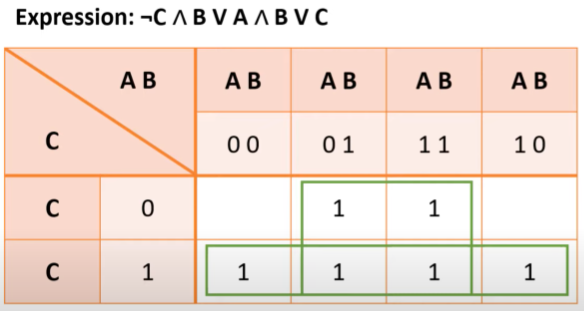
karnaugh map expression simplification
take each box in any order
take each variable in any order
if the digit for the variable in the heading stays the same, keep the variable
if the digit for the variable in the heading changes, discard the variable
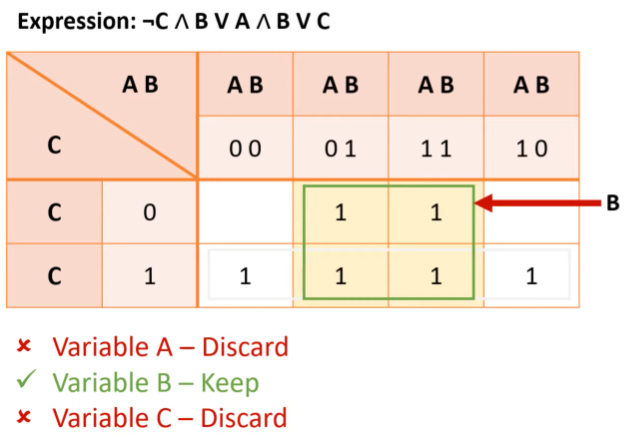
general AND boolean simplification rules
X AND 0 = 0
X AND 1 = X
X AND X = X
X AND NOT X = 0
general OR boolean simplification rules
X OR 0 = X
X OR 1 = 1
X OR X = X
X OR NOT X = 1
what does de morgans law do
a way of simplifying boolean expressions by inverting all the variables
changing ANDs to ORs and vice versa
de morgans 1st law
¬(A V B) = ¬A OR ¬B
change OR to AND
¬(A /\ B)
NOT the terms on either side of the operator
¬(¬A /\ ¬B)
NOT everything that has changed
¬¬(¬A /\ ¬B)
get rid of double negation
= ¬A /\ ¬B
de morgans 2nd law
¬(A ∨ B) ≡ ¬A ∧ ¬B
NOT (A OR B) is the same as NOT A AND NOT B
double negation
if you reverse something twice you end up where you started
NOT NOT A is equivalent to A
¬(¬A) = A
association
allows us to remove brackets from an expression and regroup variables
OR association rule
A V (B V C) = ( A V B) V C = A V B V C
AND association rule
A ∧ (B ∧ C) = ( A ∧ B) ∧ C = A ∧ B ∧ C
commutation
the order of the application of two separate terms is not important
OR commutation rule
A V B = B V A
AND commutation rule
A ∧ B = B ∧ A
distribution
allows us to multiple of factor out an expression
OR distribution rule
A ∧ (B V C) = (A ∧ B) V (A ∧ C)
AND distribution rule
A V (B ∧ C) = (A V B) ∧ (A V C)
D-type flip flop
a type of logic circuit which can store the value of one bit and flip it between 0 and 1 - used in memory circuits
a flip flop has two inputs
single bit data input (D)
clock signal (C)
a clock is a regular pulse generates by the CPU which is used to coordinate the computers components
a clock pulse rises and falls, with edges labelled rising or falling
a flip flop has two outputs
single bit data output (Q)
inverse of the data output (¬Q)
the output of a D-type flip flop can only change at a rising edge, the start of a clock tick
edge triggered, allowing synchronisation with other components
otherwise the output value us held and does not change

D-type flip flop clock
a D-type flip flop is a positive-edge-triggered flip-flop
this means the output can only be changed when the clock pulse is at a rising or positive edge (the moment the signal changes from low to high)
if the clock is not at a rising or positive edge, the output value is held and does not change

adders
a logic circuit which adds together the number of inputs which are true and outputs that number in binary
half adder
has two inputs, A and B
has two outputs, sum (S) and carry (Cout)
the circuit is formed from an AND and XOR gate
truth table, 4 rows
when A and B are both false - both outputs are false
when one of A or B is true, sum (S) is true
when both inputs are true, carry (C) is true
as in binary 1 + 1 = 0, carry the 1
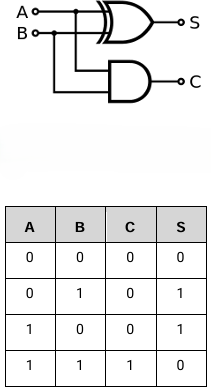
full adder
similar to a half adder but has three inputs, allowing for a carry in to be represented
formed from two XOR, two AND gates and an OR gate
truth table has 8 rows as apposed to 4 in the half adder
because the full adder has a carry input, the circuits can be changed together
how it works
to add A, B and Cin together we use the first half adder to add A and B together - giving us X
then use the second half adder to add the partial result, X to Cin - giving us the output, Digit
finally one or both of the half adders may have generated a carry bit so this needs to be fed into the next calculation
